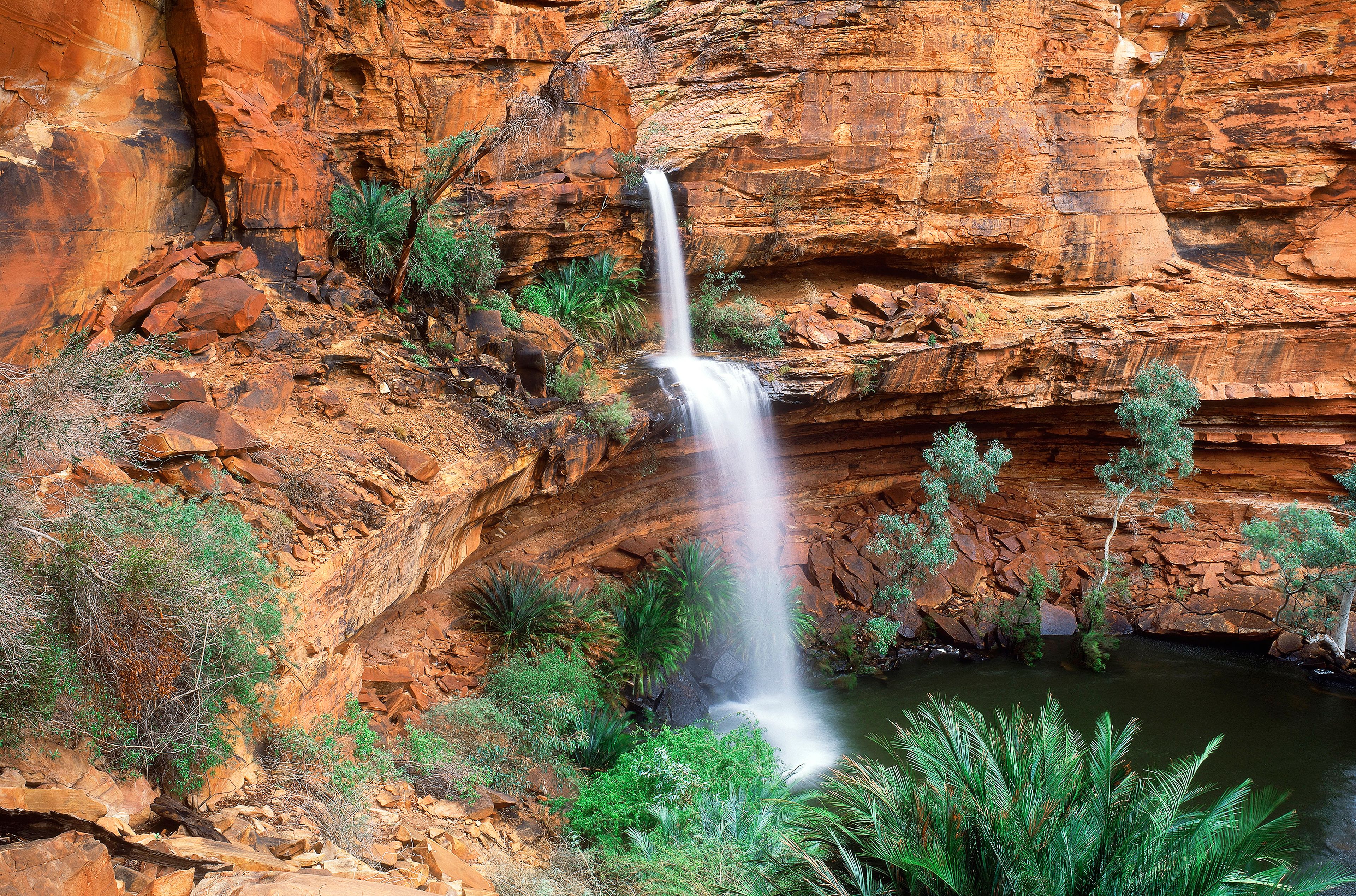Home/Curriculum resources/Working in the community /Activity 3 – Caring for our water places
Learning Area:
Health and Physical Education
Year levels:
Level 9, Level 10

Activity 3 – Caring for our water places
This activity is a part of the Working in the community resource.
Waterfall in Kings Canyon, Watarrka, Northern Territory. Source: Getty Images. Used under licence
Suggested resources
Step-by-step guide
Step 1: Visiting a local waterhole
Visit a local natural area – water is usually a hotspot for animal activity. Early morning is best. Approach very quietly (if possible) to see any wildlife that might be there. Listen for sounds.
If there is water, students can sit very still and look for fish, insects, and yabbies.
Look carefully on the ground to find tracks, fur, feathers, and droppings (don’t touch the droppings as they can have parasites). Parrots are messy eaters and may have left shredded flowers and fruit behind. Leaves on trees may have been eaten by insects.
Look for scratches and holes (but don’t disturb holes) – for example on trees – koalas, goannas, and possums leave scratches on trees. Bandicoots and wombats dig holes.
Step 2: Create drawings or photographs
Take photographs or make drawings of each of the tracks or traces, and see if you can identify what made them. You may like to contact a local ranger to help you or look at books or online resources.
Step 3: Observations
Make a list of plants and animals and record observations –
Which animals and how many? What do you think they were doing? Were any sick?
Which plants - gum trees, grasses, reeds? Are there obvious weeds? For example lantana, pasture grass, prickly pear.
Can you tick any plants or animals off the list from Activity 2?
Step 4: Classroom discussion
Discuss your findings as a class:
Think about the overall health and condition of this place – is it well looked after? Are there weeds or rubbish?
How do you think this place should be cared for or improved? What resources or information would you need to do this?
Variation: If your local water place has a lot of rubbish, students could spend a lesson cleaning it up and seeing what difference this makes to its health and useability. Using protective gloves and rubbish bags, students can remove what rubbish they can.
Discussion Questions:
Does this improve the health of the place?
Are you more likely to want to visit this place, or is more work needed?
Do you think plants and animals will benefit from your work?
Related activities within this resources:

Activity 1 – Rangers and identity
Students will watch and read to learn about the role of Rangers on country and their impact on community, and connection to place.

Activity 2 – Healthy country healthy people
Students will watch and read the resources to learn about ranger programs and the important role that women play in contemporary land and sea management and research rangers in their region.